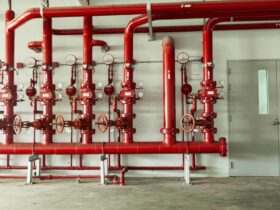Construction and civil engineering, innovative technologies continually emerge to enhance concrete structures’ strength, durability, and efficiency. One such advancement with significant traction is using rebar couplers. These mechanical devices, designed to join reinforcing bars (rebar) in concrete structures, offer numerous advantages over traditional lap splicing methods.
Enhanced structural integrity
- Rebar couplers provide a superior connection between reinforcing bars, ensuring consistent load transfer throughout the structure. Unlike lap splices, which rely on concrete bonding to transfer forces between overlapping bars, couplers create a direct, mechanical connection. This results in a more reliable and predictable load path and the structural integrity of the concrete element.
- Using couplers also allows for better continuity in reinforcement, particularly in areas with congested rebar. By eliminating the need for long lap lengths, couplers reduce the likelihood of weak points or discontinuities in the reinforcement system. This improved continuity contributes to better load distribution and increased resistance to seismic forces, making structures more resilient in earthquake-prone regions.
Space efficiency and design flexibility
- The advantage of rebar couplers is their ability to save space within concrete elements. Traditional lap splices require considerable overlap lengths, which can lead to congestion in heavily reinforced areas. This congestion complicates concrete placement and compromises its quality due to inadequate consolidation.
- Rebar couplers eliminate the need for these long lap lengths, freeing up valuable space within the concrete member. This space efficiency benefits elements with limited dimensions, such as columns, shear walls, and bridge piers. The reduced congestion also facilitates easier concrete placement and vibration, better compaction, and decreased risk of voids or honeycombing.
- Moreover, couplers’ space-saving aspect provides engineers with greater design flexibility. Architects and structural engineers can now create more slender and aesthetically pleasing elements without compromising on structural strength. This flexibility is especially valuable in urban environments, where space constraints often dictate design decisions.
Time and cost savings
- While the initial cost of rebar couplers may be higher than traditional lap splicing, their use lead to significant time and cost savings in a project. The reduced rebar congestion simplifies the assembly process, resulting in faster and more efficient installation. This increased speed of construction translates into substantial labour cost savings and earlier project completion dates.
- The use of couplers reduces the overall amount of reinforcing steel required in a structure. By eliminating the need for long lap lengths, less rebar is needed to achieve the same structural performance. This reduction in material lowers costs and decreases the environmental impact of the construction process.
Quality control and consistency
- Rebar coupler offer improved quality control compared to traditional lap splicing methods. The performance of lap splices varies depending on concrete quality, bar positioning, and construction practices. In contrast, mechanical couplers provide a more consistent and reliable connection that is less dependent on field conditions.
- Many coupler systems also incorporate visual indicators or built-in quality control features for easy inspection and verification of proper installation. This simplifies the quality assurance process and the likelihood of errors or connections.
Fatigue performance is critical in cyclic loading, such as bridges and offshore platforms. Rebar couplers often exhibit superior fatigue resistance compared to traditional lap splices. The direct mechanical connection couplers reduce stress concentrations and minimise the risk of fatigue-induced failures at splice locations. This improved fatigue performance and the long-term durability of concrete structures, extending their service life and reducing maintenance requirements over time.









